TARANTINO AT HIS INGLOURIOUS BEST
OR, A FUNNY THING HAPPENED ON THE WAY BACK FROM NAZI-OCCUPIED FRANCE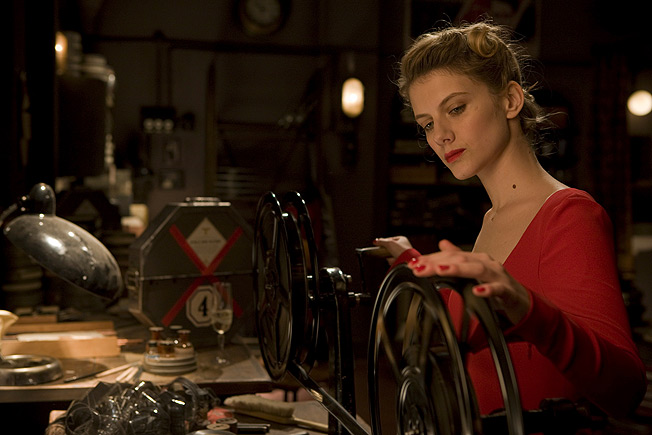
As far as I'm concerned,
Inglourious Basterds is one of the main reasons
Quentin Tarantino was called upon to make movies.
(By the way, if you care about
SPOILERS, read no further.)
From the time I saw Inglourious Basterds for the first time this past Saturday, one image that keeps sticking in my mind is one of the last images in the film-- the "Little Man" dutifully scalping a just-killed Nazi, looking up at Lt. Aldo Raine to answer the latter's semi-rhetorical question about the unacceptable possibility that Hans Lando might eventually remove his Nazi uniform. The "Little Man" (as the Nazis have nicknamed him) exudes a Hawksian professionalism in his scalping of the Nazi, and barely blinks when distracted momentarily by Raine's question, as if he is doing nothing less mundane than, say, preparing a salad, or tying a shoe. He's done this somewhere around a hundred times or more during this war, and has obviously become quite good at it.
Perfecting a practice or proccess is a major theme that runs through Inglourious Basterds, and it extends to Tarantino himself. When Raine puts the finishing touches on Lando and claims that this scar, which he has been perfecting by practicing on various subjects throughout his mission, may just be his masterpiece, the next thing we see is the credit that says the film was written and directed by Tarantino. This is the film where Tarantino knows he has reached a pinnacle of what he can do with his work—he knows what he did with Death Proof, he knows what the view of his oeuvre is by various factions of critics, and he knows exactly what he is doing with Inglourious Basterds. In this film, the next best thing to being told by the Führer that you may indeed have just done your best work yet (a proclamation which brings Tarantino's version of Joseph Goebbels to hilariously maudlin tears) is knowing that, indeed, the Führer of your own mind knows you may have just completed your own best work.
But there are masterpieces, and then there are masterpieces-- Shoshanna's suicide-mission of a film is a masterpiece on a whole different level, creating a work of revenge by filming her announcement of death to the Nazis who have gathered in her theater, and splicing that announcement into the middle of the exhilarating climax of Goebbels' masterpiece, "Nation's Pride" (this film-within-the-film, a parody of Nazi propaganda, was in real life directed by Eli Roth). The Nazis stand up and shout at the screen when Shoshanna's face and voice interrupt the drama of their war hero. Just as Shoshanna gets her own (posthumous, as it turns out) revenge on cinema by having created her own jarring cinema, Tarantino gets his cinematic revenge on Paul Schrader by giving a proper home to David Bowie's theme from Schrader's Cat People. The song itself (subtitled Putting Out Fire), which in the new film becomes a theme for Shoshanna, is a bit jarring to the viewer, especially as it brings to mind a completely different film and genre. Tarantino had been disappointed by the way Schrader had thrown the song over the closing credits to Cat People. Tarantino told Miami Herlad film critic Rene Rodriguez, "I remember working at the Video Archives at the time and thinking 'If I had a song like that for my movie, I'd build a 20-minute scene around it!' So I guess I did."
Those are just some initial thoughts I have on the film from seeing it once-- perhaps I will write more on it later. Suffice it to say, the film is worth seeing again.
DE PALMA REFERENCES
Scenes in the climax, where everybody is locked inside the theater as it is burning, do indeed have the look (and sometimes the feel) of the prom-on-fire climax of Brian De Palma's Carrie, especially the colors. A commentor on this blog, "LUU" from France, also noted the Carrie similarities, and then added:
In the projection room, at the end, there is an hommage to Blow Out, the image of Travolta sitting in front of a pile of films. When Shoshanna opened a door the camera goes through the wall just like in Blow Out. There is also this mythical image of "Scarface shooting people" at the very end. (And probably Femme Fatale).
I am not sure what he meant by the Femme Fatale reference, but there you have it.
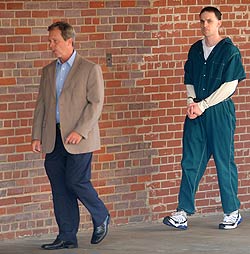 According to this Associated Press article from Canada's CBC, Steven Green told the judge at his trial in Kentucky that he was merely following orders from other soldiers when the group of them, disguised as insugents, attacked a family at their rural home outside Mahmoudiya, Iraq, in 2006. When asked how he felt about the others being out of prison one day, Green said that would be "all right" with him. "They planned it," said Green. "All I ever did was what they told me to do." Here is an excerpt from the article:
According to this Associated Press article from Canada's CBC, Steven Green told the judge at his trial in Kentucky that he was merely following orders from other soldiers when the group of them, disguised as insugents, attacked a family at their rural home outside Mahmoudiya, Iraq, in 2006. When asked how he felt about the others being out of prison one day, Green said that would be "all right" with him. "They planned it," said Green. "All I ever did was what they told me to do." Here is an excerpt from the article: 



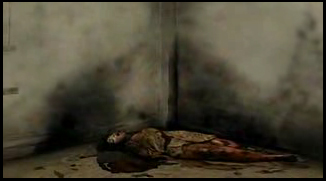
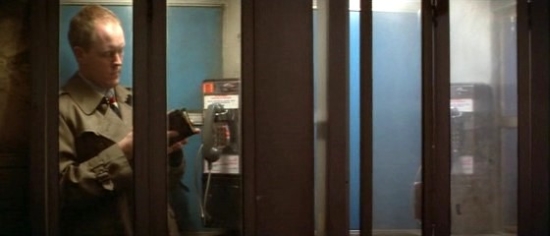
 Michael Phillips, the new co-host (with A.O. Scott) of
Michael Phillips, the new co-host (with A.O. Scott) of  Two years after Brian De Palma's Redacted had its world premiere in Venice, the collective known as
Two years after Brian De Palma's Redacted had its world premiere in Venice, the collective known as  Samuel Blumenfeld, co-author of Brian De Palma: Conversations with Samuel Blumenfeld and Laurent Vachaud, interviewed Quentin Tarantino a couple of weeks ago for
Samuel Blumenfeld, co-author of Brian De Palma: Conversations with Samuel Blumenfeld and Laurent Vachaud, interviewed Quentin Tarantino a couple of weeks ago for  And with so much discussion going on about Tarantino's new film in relation to some of Spielberg's WWII films it is nice to see what Tarantino himself has to say about them. Here is what Tarantino told Blumenfeld about Saving Private Ryan:
And with so much discussion going on about Tarantino's new film in relation to some of Spielberg's WWII films it is nice to see what Tarantino himself has to say about them. Here is what Tarantino told Blumenfeld about Saving Private Ryan:  The passing of Ted Kennedy has inspired at least two bloggers to recall Brian De Palma's Blow Out, which had definite echoes of the infamous Chappaquiddick incident from 1969. In that incident, following a party on Chappaquiddick Island, Mary Jo Kopechne was found dead inside Kennedy's overturned car, which was submerged in a tidal channel. Kennedy had left the scene of the incident, and later said that the night before, he had taken a wrong turn and accidentally drove off a bridge and into the water. A scandal quickly took hold, and Kennedy's presidential hopes seemed forever scarred by the whole affair. Conspiracy theories emerged, as well, as Kennedy had apparently driven down the original road (before he made that "wrong turn") on several occasions, and also altered his story in a televised address about a week later.
The passing of Ted Kennedy has inspired at least two bloggers to recall Brian De Palma's Blow Out, which had definite echoes of the infamous Chappaquiddick incident from 1969. In that incident, following a party on Chappaquiddick Island, Mary Jo Kopechne was found dead inside Kennedy's overturned car, which was submerged in a tidal channel. Kennedy had left the scene of the incident, and later said that the night before, he had taken a wrong turn and accidentally drove off a bridge and into the water. A scandal quickly took hold, and Kennedy's presidential hopes seemed forever scarred by the whole affair. Conspiracy theories emerged, as well, as Kennedy had apparently driven down the original road (before he made that "wrong turn") on several occasions, and also altered his story in a televised address about a week later. 
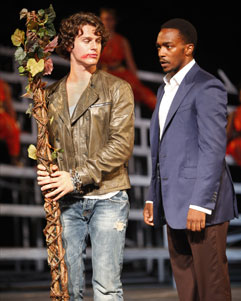 When Joan MacIntosh portrayed Dionysus' aunt Agave in Richard Schechner's Dionysus In '69, itself a 1968 adaptation of Euripides' The Bacchae, she was twenty-something years old. Now in her sixties, she is playing the same role in a new version of the play directed by Joanne Akalaitis (and with music by Phillip Glass), now running through August 30th at
When Joan MacIntosh portrayed Dionysus' aunt Agave in Richard Schechner's Dionysus In '69, itself a 1968 adaptation of Euripides' The Bacchae, she was twenty-something years old. Now in her sixties, she is playing the same role in a new version of the play directed by Joanne Akalaitis (and with music by Phillip Glass), now running through August 30th at